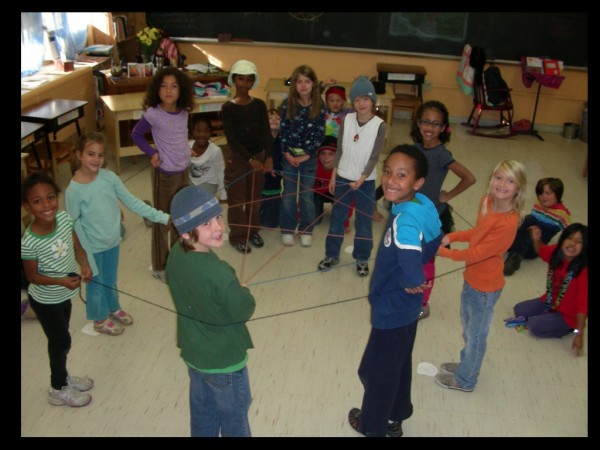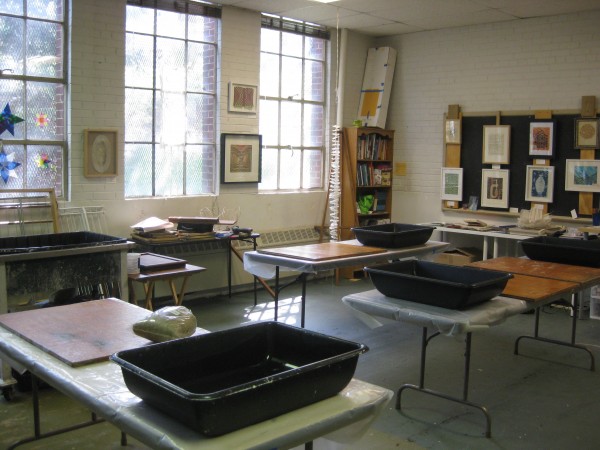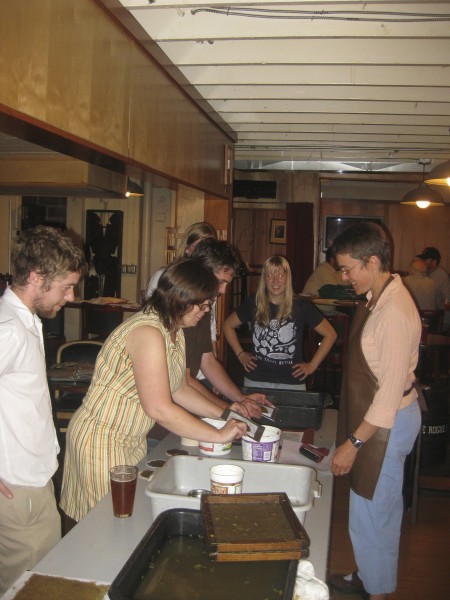Seeing is Believing
How do you learn best? I’m a kinesthetic learner, although once I grasp a subject and have a tactile experience, I can absorb more information through reading and seeing examples. Wikipedia’s definition of the term: Kinesthetic Learning (also known as Tactile Learning) is a learning style in which learning takes place by the student carrying out a physical activity, rather than listening to a lecture or watching a demonstration. People with a preference for kinesthetic learning are also commonly known as “do-ers“. Tactile/kinesthetic learners make up about five percent of the population. ONLY 5%? Really?

When my children were little, we looked at Waldorf schools (my daughter attended a Waldorf preschool and both of my kids ended up going to a charter Waldorf public school for five years). When I visited one private Waldorf school, I was struck by the way a group of young kids (age 8 or so) were learning their times tables. They weren’t memorizing the tables like I had as a kid, but they stomped around the classroom in a group, stepping to the numbers. They’d quietly step the in-between numbers, 1, 2 and then stomped with more emphasis on the 3’s, saying those numbers out loud. 1, 2, THREE, 4, 5, SIX, 7, 8, NINE, 10, 11, TWELVE and so on. Their little bodies absorbed those times tables. And I’ll wager that some of those kids still stomp (perhaps in their heads) to recall the answers to their times tables today.

I have great admiration for those of you who have learned to make paper by reading a book! Our field has come a long way in the past 50 or so years, but it is still young and the opportunities for hands-on learning can be few and far between. I moved to NYC right after college (where I got a BA in Art). After a brief trip to Japan, where I became intrigued with handmade paper, I purchased the book Washi, by Sukey Hughes, checked a few other books out of the library and started recycling paper in my blender. Soon afterwards, I stumbled across Dieu Donné Papermill right in the city – what good fortune – and the even better fortune was the fact that they needed a new employee and I fit the bill!

Grimanesa Amoros teaching kids papermaking through Dieu Donné’s Responsive Hands program
I took one 8-week papermaking course at Dieu Donné with Paul Wong, in which I learned the basics during three-hour sessions once a week, but my day job at the mill was administrative. After I’d grasped the basic hands-on concepts, I began to learn the rest by observing and practicing (one of the job perks was free access to the studio on evenings and weekends). I worked at Dieu Donné for six years, and during that time I had the opportunity to develop papermaking programs for children and adults alongside witnessing the varied projects that occurred on a daily basis with artists working in the studio.

My current studio in Red Cliff, Colorado
After I left the mill (to move to Portland, Oregon and start a family) I set up my own papermaking studio and have been figuring things out ever since, many by trial and error, often consulting with colleagues, as well as via professional conferences such as the Friends of Dard Hunter, the International Association of Papermakers and Paper Artists, and the College Book Art Association.
I’ve also taught papermaking in a variety of institutions, including my own studio. It can be challenging to teach in other facilities (although I thrive on challenges) and having students come to my studio is easiest (although not always practical). Last fall, I had a rewarding exchange during a one-day private lesson in my studio, because my client had studied my work and was able to tell me what she wanted to learn. This may sound obvious, but it isn’t always the case. She sent me this list, and I was able to prepare accordingly: working with over-beaten abaca, discussing beating times, seeing how my studio is set up, understanding how to make sculptural/wire pieces with wet formed sheets, lantern-basics: structure/assembly with dry paper, registration for double-couching, drying sheets of paper absolutely flat, discussing pulp painting (beating times).
How do you learn best, and where did you learn to make paper? I’d love to read your comments!


6 Comments
i really enjoyed reading this piece, helen. as a special ed teacher i find that my observation of kids teaches me a lot about them. for example, handedness is shockingly still an issue for students, the lefties struggle more in this right handed world. a huge surprise to me was how many kids STILL tell me that adults have tried to change their handedness. all of my students learn best with their whole bodies, not just their heads. some of my best classroom successes have been when i’ve brought my traveling papermill into the classroom.
Thank you, Velma! Isn’t it amazing to see how others learn? I learn so much from teaching!
I very much enjoy your Sunday Paper and the fascinating facts about paper,Helen. I have learned the basics from your book and just playing and exploring. I am incorporating handmade paper in collages and have made several paper casted wall pieces.
Thank you for all you do to help us enjoy the papermaking process.
Thanks, Win. I look forward to seeing your collages and cast wall pieces.
Helen – Thank you for the article on tactile learning. As the previous person mentioned that being left handed has its obstacles and being left hand I know. Learning has always been a challenge because of the way so much education is directed – read and understand. I”m afraid that when I read instruction the mind goes blank. I have to have my hands in the process. But only 5% Wow!! I’m in the low percentage.
I taught in the public schools system for over 30 years and I never heard of the Waldorf teaching method until last fall when I was talking to a couple and their daughter from Australia. The six year old daughter was so bright and differently a hands on child. Do you suppose the public schools systems don’t want anyone know that there is a different and better way of teaching. I believe so.
I have taught many elementary and adult papermaking classes and so many times I have heard the response of “This is something I will remember for ever.” Hint, hint using ones hands.
Thanks Helen for the Sunday paper news.
Tom
Tom,
thanks for your observations! I don’t know much about left-handed learning, and its fascinating that two of you who replied to this post are left handed. I do agree with you about the public school system wanting to standardize, but there are possibilities for new avenues. My kids went to a PUBLIC Waldorf charter school… and I’m sure you are aware that there are lots of objections to charter schools. Its good to hear from you!